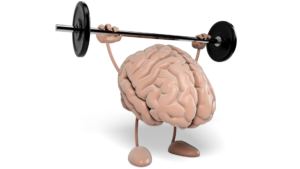WRITE AWAY

Hello world!
It is no secret that I believe the most important writing I do each day are the three pages I scribble in my notebook every morning. I call this process my DAILY PAPERS and have blogged about it here.
This practice of allowing my mind the freedom to wander, of turning off that noisy inner editor, of letting my pencil scrawl across the page, and of writing like no one is watching, has without doubt helped me to become a MUCH better writer. It has helped me to develop my voice and confidence, and to come up with gems of ideas that seem to come out of the ether, but end up on the page of my notebook and eventually into the pages of my books. I know without doubt that this practice has helped me to flex my writing muscle on command – which is so important.
 I also know without doubt that this daily writing practice is beneficial for kids too. I have seen the results! The sparkle in kids’ eyes as they embark on their latest story. The increase in confidence as they experience the joy of creation. The huge improvement in writing skills. And happily, as I visit schools around the country, I am seeing more and more schools embracing this idea in various ways. (Drop Everything and Write programs, individual daily writing and conferencing programs within literacy blocks, before school writing clubs in school libraries etc.)
I also know without doubt that this daily writing practice is beneficial for kids too. I have seen the results! The sparkle in kids’ eyes as they embark on their latest story. The increase in confidence as they experience the joy of creation. The huge improvement in writing skills. And happily, as I visit schools around the country, I am seeing more and more schools embracing this idea in various ways. (Drop Everything and Write programs, individual daily writing and conferencing programs within literacy blocks, before school writing clubs in school libraries etc.)
When we write, we feel vulnerable. We are bearing a little of ourselves and we fear being judged. This is true for professional writers and beginning writers and somewhere-in-between writers. We are all storytellers – we are born that way. And we all have wonderful imaginations. But often our imaginations are stifled and our natural storytelling ability restricted because of this fear. Somehow we have to eliminate it.
Cue: WRITE AWAY. The name I am giving my initiative to encourage daily writing and to take away that fear.
Imagine a classroom where students start the day (or literacy block or afternoon session) with ten-fifteen minutes of free writing in their own notebooks. Where they file in, sit at their desks and begin to WRITE AWAY happily (and silently). Where they are free from judgement. Where they can write like no one is watching. Where their creativity is valued and allowed to bloom. Where they have ownership of what they write and are encouraged to write about things that interest them. Where they can develop their writing muscle so they can flex it on command. (Which is probably the best preparation one could give students for the dreaded NAPLAN – IMHO.)
Here are my guidelines for WRITE AWAY.
- Provide students with their own WRITER’S NOTEBOOK. This is their book for their own stories and ideas. Ideally it should look different to their normal exercise books. Maybe a scrapbook?
- This book is a NO TEACHER, NO RED PEN zone. It is NOT a book to be marked. It is a book for students to tap into their creativity. To explore and experiment with words and ideas. And importantly to write freely without fear of judgement. (This is the crucial element.)
- Encourage students to write about whatever comes into their heads – to turn off their internal editor and let the words pour out, even if what they are writing is deemed as “rubbish”. (Often my best ideas come out of my “rubbish”.) No topics. No genre. They can write a story. A poem. A list. They can ramble. Vent. Write what they observe. They can write “I don’t know what to write. My brain is empty.” This is not considered writing; it is more stream of consciousness writing.
- Encourage students to write quickly and freely – not to worry about mistakes or to go back and read what they have written. This is not the time to focus on spelling, punctuation and grammar. (These things are important too, but not during this process.)
- Teachers – this is NOT the time to patrol. You will be able to see that the students are engaged by the pens flying across their pages and the concentrated hush in the room. I urge you to write as well. This will help you to work on your own writing muscle, provide a positive role model and perhaps tap into your own creativity.
- If students feel they need a stimulus, one can be provided. But it is probably better to encourage students to find their own and to collect ideas and pictures and paste them into their books. (As “real” writers do.) Once the students get into the writing habit, they rarely have trouble coming up with ideas.
- Students should be under no obligation to share their writing. (Though some students will be bursting to do so – and this is fine.)
- Trust the process. It works.
WRITE AWAY is, of course, only part of the process of developing enthusiastic, confident and skilful writers, but I believe it to be a crucial one and I hope teachers are able to find ways to incorporate the general principles into their literacy programs. (I understand the demands on teachers and the overcrowded curriculum.)
But we must never forget that writing is a craft and the only way to develop that craft is to practise it – to write and write and write.
Dr Kaye Lowe (author of Writing the Future) said to me recently, “Sue, we have to get the kids writing!” I nodded my head vigorously. I couldn’t agree more! And I vowed silently to do what I could to make this happen. This post is one of my first steps towards that goal.
Happy writing.
Sue
Feature image: Future writer @everett225/depositphotos

Thank you Sue. I am looking forward to putting your words of writing wisdom to work in helping my clever, creative little grandson understand the joy and importance of developing into a capable writer. I am lucky to be able to tap into your works of writing expertise.
You are most welcome! Hope the two of you have lots of fun as your grandson develops his confidence!
YES. YES. YES. And as early as possible.
I couldn’t agree more!